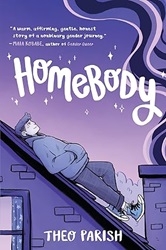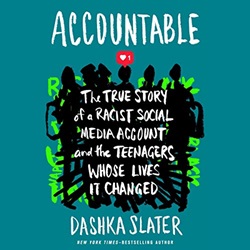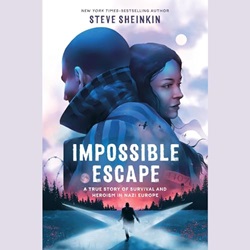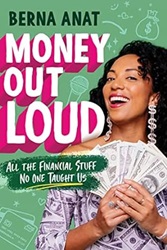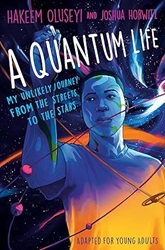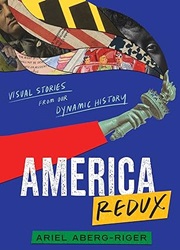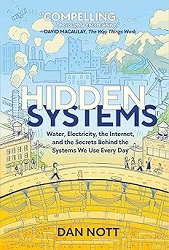Review of Homebody, by Theo Parish
by Theo Parish
HarperAlley, 2024. 224 pages.
Review written June 7, 2024, from a library book.
Homebody is a graphic novel memoir about the author’s search for home in their own body — their coming-out journey as transgender nonbinary.
I’ll be honest — it’s harder for me to understand nonbinary gender than other transgender journeys. But Theo telling their own story helps me understand better. I love their depictions of gender euphoria — of feeling happy and at home in their own skin after realizing that nonbinary was the right fit for them.
As a graphic novel, this is a quick read. I had trouble distinguishing between different people in the pictures — they mostly looked alike to me, but the most important character is Theo themselves, and I could tell which one they were.
This book tells about Theo’s journey feeling at home in their body, and mentions they are attracted to women (so first thought they were lesbian), but there is no mention or depiction of sexual experiences, unlike Gender Queer, which is a favorite target for book banners. I’m guessing they’ll still take offense at someone explaining how they know nonbinary is the right description of their gender, but let it be known that this book is not about sex.
And it is a book about joy. Reading this book lifted my heart with gladness for Theo learning to make her own body feel like home.
Find this review on Sonderbooks at: www.sonderbooks.com/Teen_Nonfiction/homebody.html
Disclosure: I am an Amazon Affiliate, and will earn a small percentage if you order a book on Amazon after clicking through from my site.
Disclaimer: I am a professional librarian, but the views expressed are solely my own, and in no way represent the official views of my employer or of any committee or group of which I am part.
What did you think of this book?
